AUGUST CHALLENGE DAY 23
For the Silly Season I've set myself the challenge of visiting a different art exhibition on every day of the month and blogging about it.
Sunday 23 August
Exhibition: Facing History
Place: Victorian and Albert Museum
The V & A’s collection of prints, drawings and photography is vast and deserves to be more cherished than it is. This diverse show exploring contemporary portraits from the collections gives an opportunity to think about what portraiture means for a diverse group of artists today.
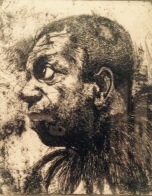 Lynette Yiadom-Buakye Siskin.
Lynette Yiadom-Buakye Siskin.
The invention of photography superceded art portraits in one of their prime functions, the recording of appearance. But portrait art at its best was always more than just a record. It dealt in personal history and the exercise of memory. The title Facing History plays on this by suggesting that the historical role of face painting is as valid as it has always been. If there is ever an end to artists’ fascination with the human face, it will be the end of art itself.
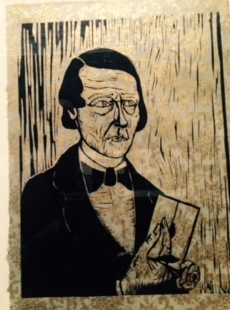 Grayson Perry from Mr and Mrs Perry
Grayson Perry from Mr and Mrs Perry
There are artists here who use portraits for role playing, as wish fulfilment. A pair of deliberately archaic portraits by one of the great artistic role-players, Grayson Perry, presents himself and his wife as, perhaps, New England newly-weds at around the time of the American Revolution.
Then there is a series of eleven colour woodcuts with drypoint by Ellen Heck about her ultimate hero the Mexican painter Frieda Kahlo, in which some of Heck’s friends appear “as” Kahlo, or Kahlo herself is portrayed in some other role – for instance, as Leonardo’s Lady with Ermine.
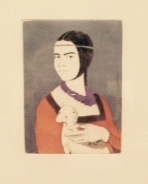 Ellen Heck Frieda Kahlo as the Lady with the Ermine
Ellen Heck Frieda Kahlo as the Lady with the Ermine
Other masquerading artists are Gavin Turk, who creates a self-portrait with no expression, eyes closed, as if a death mask, Natalia Lamandova, who prints her own face on the heads of rag dolls and photographs them as if for official documents, and Cindy Sherman, whose entire work consists of herself role-playing.
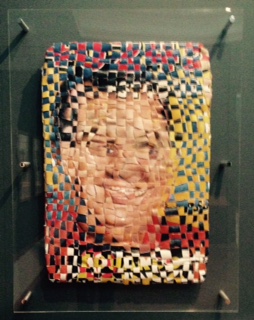 Jarbas Lopes O Debate
Jarbas Lopes O Debate
Another use for the portrait is when a known face is appropriated for political comment, as when Pedro Mayer replaces the head of Lincoln on the five dollar bill with that of Che Guevara, or when Jarbas Lopes realised a clever idea by printing the faces of two opposing politicians, cutting the prints into horizontal and vertical strips and then interweaving the strips to form a composite grotesque face.
Thomas Ruff, whose negatives I saw only the day before at the Gagosian, is also represented here by four-full face headshots of different individuals but with something ineffably disturbing in common. Eventually you realise that Ruff has replaced the subjects' own eyes in each case with an identical pair of perfect blue peepers.
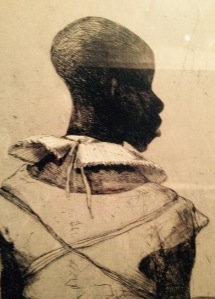 Marcelle Hanselaar White Collar Black Man
Marcelle Hanselaar White Collar Black Man
But the strongest image here, I think, is Marcelle Hanselaar’s etching White Collar Black Man, in which the subject is seen from behind, turning his head to look in painful alertness to his right. Above a grubby slave's vest he wears a frilly, bright-white, fan-pleated collar of a kind worn in Europe right at the start of the colonial period: such a simple image, but making a complex and memorable statement about colonialism and subjugation.